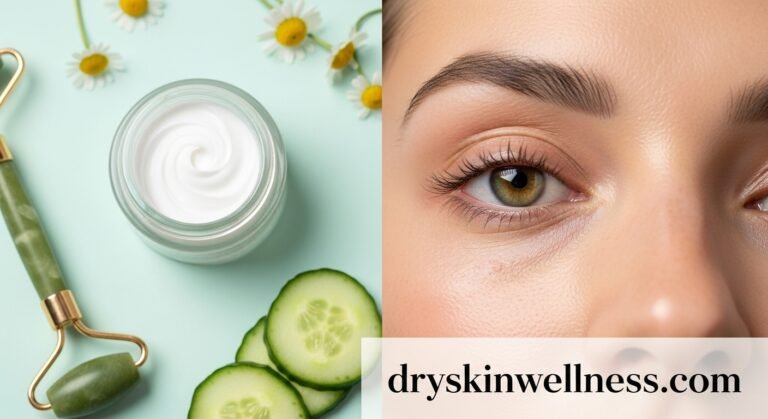Dry Ankle Bone Skin And Their Hidden Story
For those among us who stride through life, there’s a silent struggle happening down by our feet. It’s the tale of unnoticed dryness on the most under-appreciated part of your lower leg – the ankles.
This blog post is your survival manual for dealing with the often-overlooked condition of dry ankle bone skin. Whether you’re an athlete, skincare devotee, or medical professional, join us as we explore the causes, treatments, and importance of caring for our most sturdy yet sensitive support system – our ankles.
Conjuring the Culprit: Why Do Ankles Go Dry?
Dry skin, or xerosis, is no respecter of the location on the body and can manifest even in the supple regions of the ankle bone. However, due to various factors specific to this area, dryness can be a more persistent problem than in other, more salient areas like the hands and face.
The skin around the ankles is thinner and more predisposed to dryness due to a lack of sebaceous glands and natural oils.
The Common Offenders
Environmental Extremes: The elements can affect our skin’s moisture level. Chilling temperatures and low humidity affect the protective lipid barrier, making the skin more prone to dryness and cracking.
Personal Hygiene Practices: Excess leg washing or harsh soaps may strip the skin’s natural oils, leading to moisture loss and dryness.
Underlying Health Issues: Conditions like eczema and psoriasis can specifically target the ankle area, exacerbating skin dryness and leading to discomfort.
Navigating the Ankle’s Map of Moisture
To understand your ankle’s plight, familiarize yourself with its anatomy. The skin around the ankle attaches to a complex system of tendons and ligaments; all interconnected to support the body’s weight. When dry, this skin on the move can be prone to painful fissures and inflexibility, further complicated by the protruding bone structure of the ankle itself.
The Ankle in Distress
Skin Layers: The epidermis, dermis, and subcutaneous tissues protect the sensitive ankle bone, but when dry, they can be the root cause of many issues.
Tendons and Ligaments: These connective tissues, when combined with dryness, can lead to tendonitis and ligament strain, a discomfort athletes are all too familiar with.
Moisture to the Rescue: Lathering up and More
A robust moisturizing routine can be the game-changer in your ankle’s skirmish against dryness. However, not all lotions are equal, and the ankle’s unique features demand specialized care.
The Rehabilitative Treatment:
How Often: Aim for at least twice-daily applications, especially after showering or bathing.
What To Use: Thick, emollient-based moisturizers are ideal for long-lasting moisture.
Ingredients to Look For: Ceramides, hyaluronic acid, and lanolin are superheroes for restoring and retaining moisture.
Pray for Prevention: Keeping Ankles in A Moisture-Safe Zone
Prevention is not just the best cure; it’s also the most accessible when it comes to keeping your ankles supple and crack-free. A few simple adjustments to your daily routine can improve your ankle’s moisture content.
The Proactive Protector:
Appropriate Footwear: Shield your ankles from the elements with boots or covered shoes in harsh weather.
Avoid Harsh Chemicals: Limit exposure to chemicals in everyday household products and cleaning agents.
Hydrate from Within: Keeping your body hydrated also keeps your skin hydrated, including your ankles.
Reading the SOS Signals: When to Call in Professional Reinforcements
In most cases, dry ankles are a minor inconvenience that can be mitigated with a tailored approach. However, in some instances, persistent dryness can signal a more severe problem that requires professional attention.
The Professional Diagnosis:
Unrelenting Symptoms: If severe dryness is accompanied by itching, inflammation, or pain, it’s time to get an expert’s opinion.
Chronic Conditions: Those with existing skin conditions should be extra vigilant in monitoring their ankle skin health and seek regular check-ups.
FAQ
Q: Can dry ankles be a sign of more severe health conditions?
A: In some cases, yes. Persistent dryness accompanied by symptoms like inflammation and pain should be brought to the attention of a medical professional for proper diagnosis and treatment.
Q: What type of moisturizer is best for treating dry ankles?
A: For long-lasting hydration, look for thick, emollient-based moisturizers with ingredients like ceramides, hyaluronic acid, and lanolin. It’s also recommended to apply moisturizer at least twice daily, especially after showering or bathing.
Q: Are there any other preventative measures I can take to keep my ankles from becoming dry?
A: Yes! Some simple adjustments to your daily routine, such as wearing appropriate footwear, avoiding harsh chemicals, and staying hydrated, can help prevent dryness in your ankles. Always prioritize self-care and listen to your body’s signals to ensure optimal ankle health. So don’t neglect those little limbs – give them the love they deserve!
Q: Can dry ankles be a recurring issue?
A: Dry ankles can be a recurring problem, depending on the underlying cause. It’s essential to continue a regular moisturizing routine and pay attention to any symptoms or skin health changes. Regular check-ups with a medical professional can also help prevent and manage recurring issues.
The Final Stretch: Ankle Health is a Step Away
Your dry ankle bone skin health reflects the care you bestow upon it. By heeding these simple yet essential practices, you’re ensuring that your ankles feel better and that they’re better equipped to keep you moving pain-free.
By taking a few moments each day to moisturize, adjust habits, and seek appropriate care, you’re stepping towards a life where every footfall feels light, and ankle dryness is a distant memory.
Caring for your ankle skin is an act of self-respect, nurturing, and healing – an itch you should scratch by learning to love your stride better.



